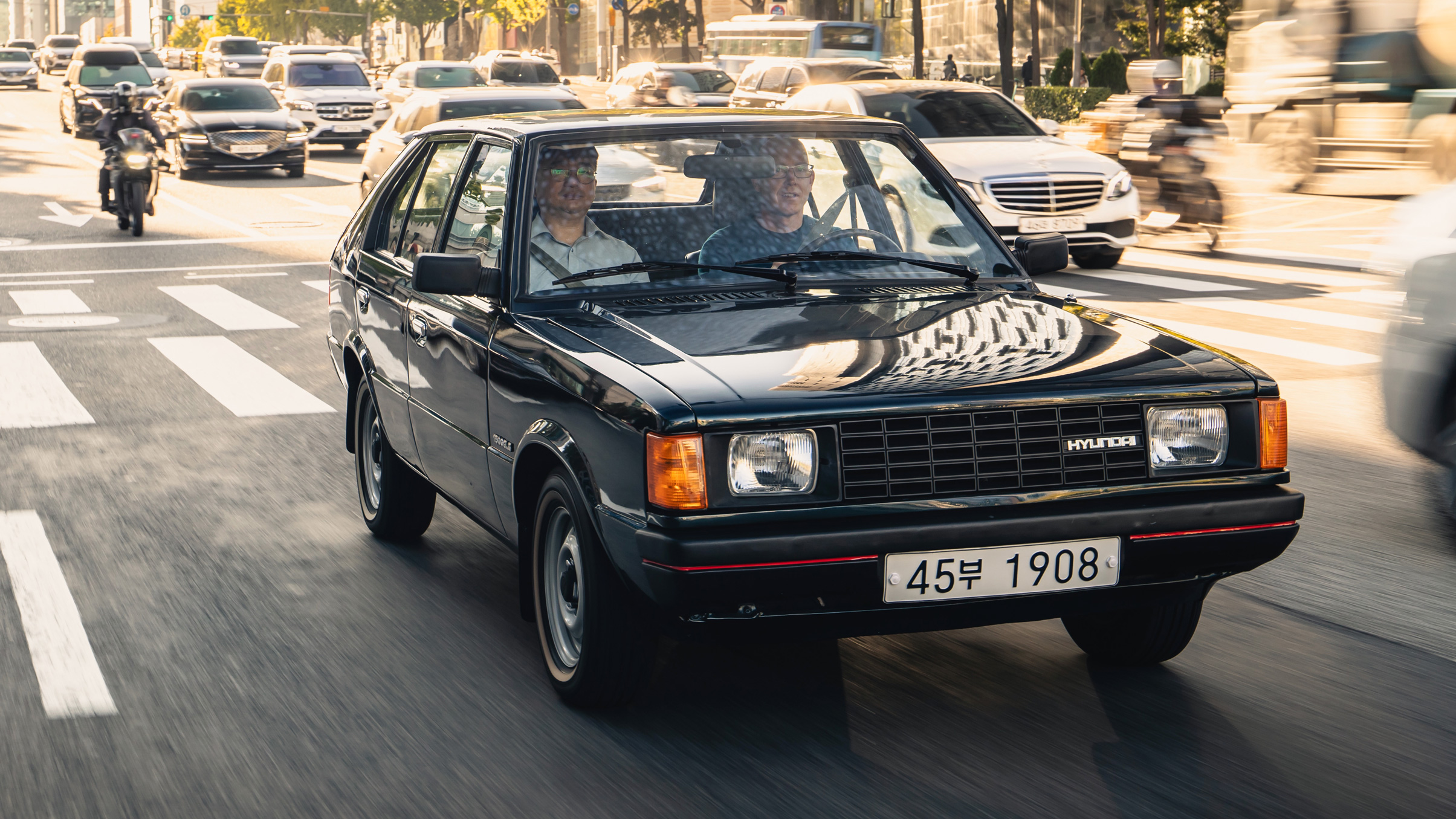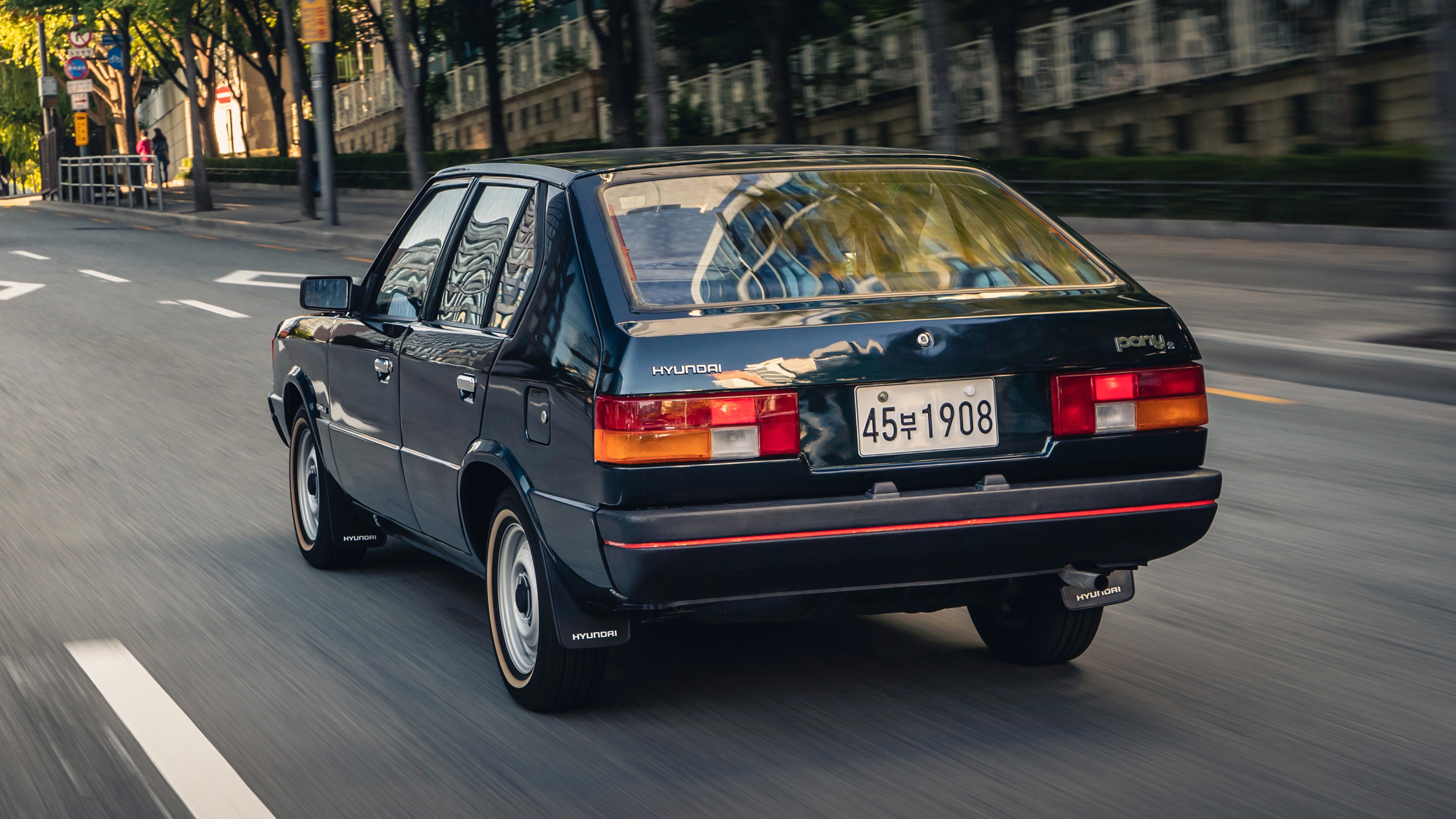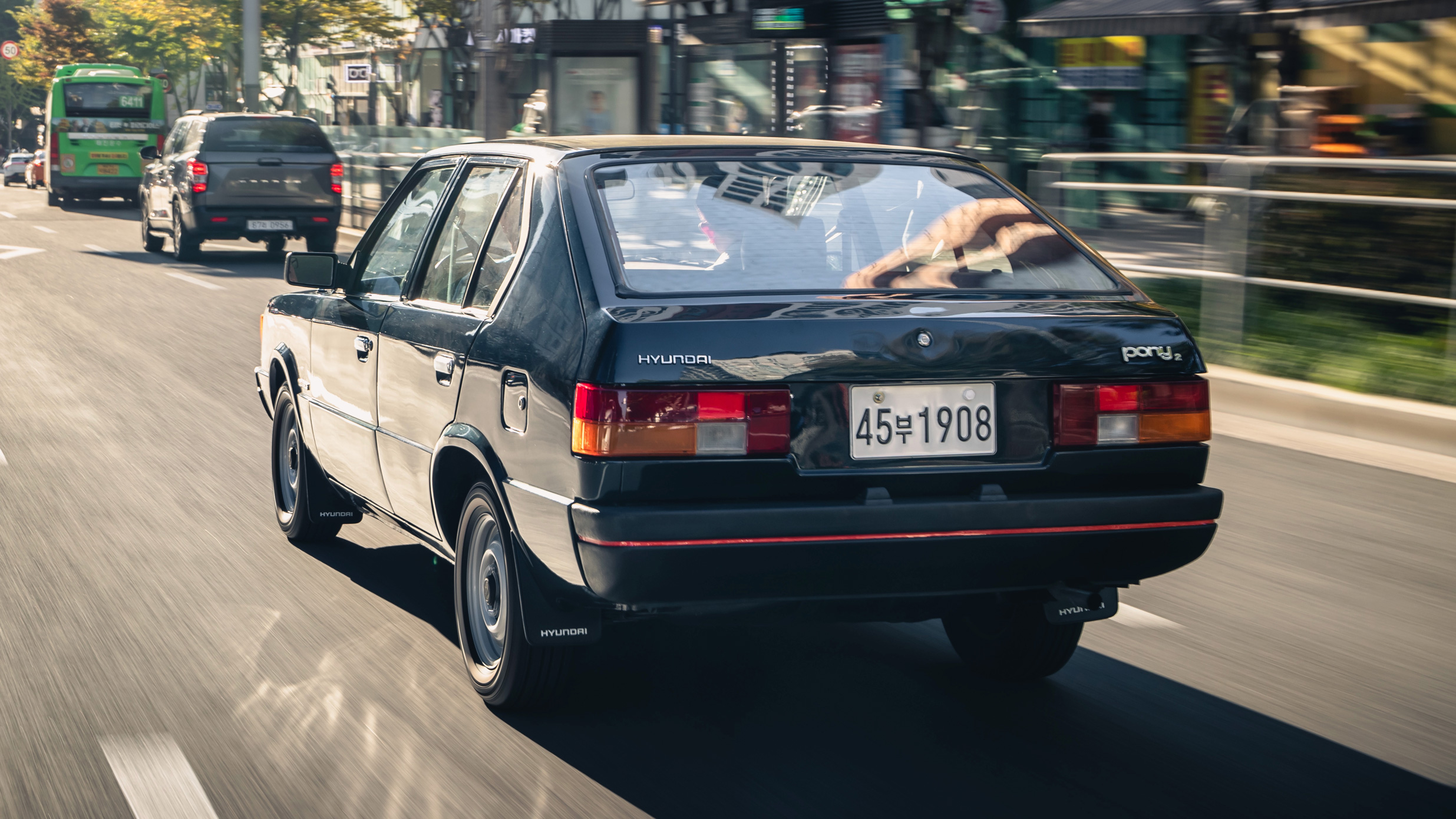
Hyundai Pony review
Good stuff
Historically significant with a great creation story, spacious inside, easy to drive
Bad stuff
Basic interior, brittle materials, not exactly collectable
Overview
What is it?
The OG Hyundai. Or at least very nearly. The car you see here is a Pony 2. 1 had arrived seven years earlier, at the end of 1975. Truth be told there wasn’t that much change between one and two. Single rectangular headlights instead of twin round inside a nose that sloped back rather than forwards. Underneath they were mechanically largely the same. And neither was the first car Hyundai built.
Er, what?
The Pony was Hyundai’s first car that was all Korea’s own work. Although, as we shall see, that wasn’t strictly true either. Anyway, before 1975 Hyundai had built other people’s cars under licence, among them the Ford Cortina, built in Ulsan from 1968. But of course they wanted to do their own stuff, but without experience of car building, they needed a hand. So they hired a Brit.
Eh? I must’ve misheard.
You heard right first time. George Turnbull was MD of Austin Morris (part of British Leyland). Hyundai had dealt with him before, and decided he’d be just the chap to help them get their fledgling car business off the ground. Although he died a long time ago (back in 1992) he remains a legend in South Korea. He started at Hyundai in 1974 and brought with him five other car engineers and designers. And a pair of Morris Marinas.
Are you about to tell me Hyundai’s first car was based on a Morris Marina?
That’s about the size of it. It was a bit of a bodge (aren’t they all?), carrying some parts over from the Ford Cortina, while drivetrains were bought in from Mitsubishi and it was cloaked in a hatchback body designed by none other than Giorgetto Giugiaro.
It was rear-wheel drive, through a solid rear axle supported by leaf springs, powered by in-line four cylinder engines and there was a choice of manual or auto gearboxes.
It went on sale at the end of ’75, and was an immediate hit in the domestic market. Legend has it that Hyundai was a profitable car company within a year of starting production – and production had started not much more than a year since Turnbull had landed with his engineers and Marinas. That’s amazing. The definition of a successful start-up.
What about exports?
They didn’t take long to follow. In 1976 Hyundai began sending cars to South America, with Europe coming online from 1979. By that stage the model range was already expanding. The four door hatch (it only had a small notch tailgate) was joined by a three-door liftback, an estate, and even a pick-up. However, those were mostly for the domestic market – exports only really got started with the second gen car (like the one you see here) came along in 1982.
To America, I’m assuming?
No, even back then it didn’t meet emissions regs for the USA. But it did for Canada. And here it got a lucky break. As Korea was seen as an emerging market economy the Canadian authorities gave it some tax breaks. That enabled Hyundai to sell it cheap – it started at just $5,795, with a full house GLS version at $6,695. The number may not mean much, but the key point is that it undercut all its rivals.
Hyundai predicted sales of 5,000 per annum. They guessed wrong about Canada’s appetite for a bargain. Having gone on sale in December 1983, the following year over 25,000 were sold. In 1985 that figure doubled again. In the space of two years from a standing start, the Pony was Canada’s best selling passenger car.
OK enough history, what’s it like today?
Rudimentary, but tolerably well engineered. It certainly wasn’t an advanced car and never pretended to be. Even this gen 2 had a carburettor rather than fuel injection and the four speed manual is a bit shaky. It’s a car that does the job of being a car without ever seeking to do more. It’s a classic first effort – the kind of car where you can tell they were just trying to get the engineering and production right, with little capability left over to consider dynamics or design.
Visibility is excellent, largely because the concept of crash structure and safety cells hadn’t properly introduced themselves back then, and for similar reasons there’s plenty of space inside. The metal frame is thin, there’s not much sound-deadening and the engine, although not harsh, is a constant companion. It’s roughly the size of a Ford Fiesta (won’t be able to use that as a benchmark for too much longer), and weighs around a tonne.
What's the verdict?
Even at a distance of 40 years (the Pony is older than 90 per cent of the buildings we drive past in Seoul), Hyundai’s first model shows signs of the talent that has taken the firm to the top of the global automotive table. For a parts bin special, it has a sense of being its own thing rather than a direct rip-off of someone else’s work.
Sure, there’s nothing innovative about it, but very few car firms get off the ground by being innovative straight out the box. They develop by building sensibly off firm foundations. The Pony is exactly that – not a thrilling car, but a very savvy one.
Featured

Trending this week
- Car Review
BMW iX3






